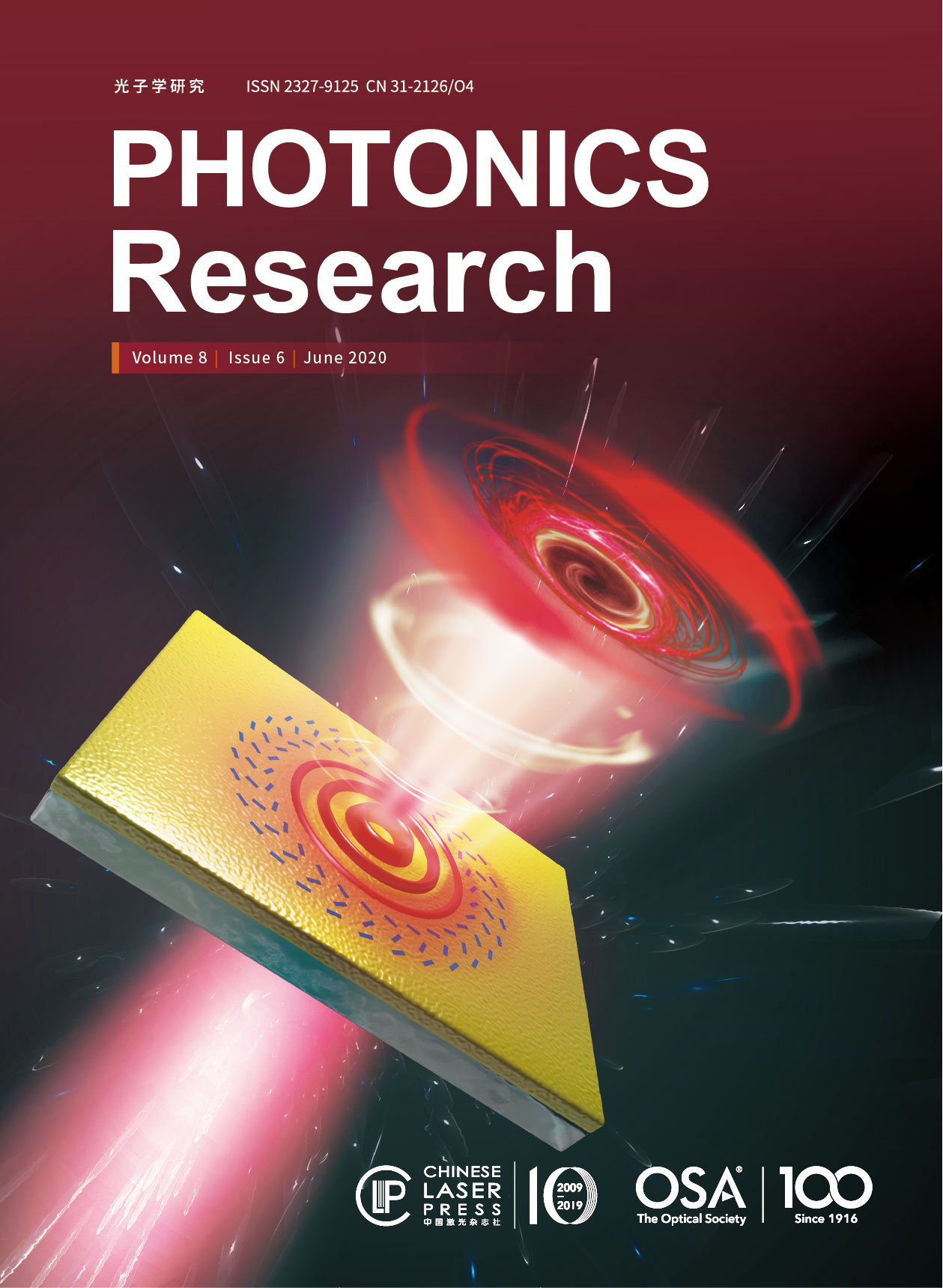- Publication Date: May. 14, 2020
- Vol. 8, Issue 6, 875 (2020)
- Publication Date: May. 08, 2020
- Vol. 8, Issue 6, 844 (2020)
- Publication Date: May. 28, 2020
- Vol. 8, Issue 6, 940 (2020)
- Publication Date: May. 28, 2020
- Vol. 8, Issue 6, 963 (2020)
- Publication Date: May. 26, 2020
- Vol. 8, Issue 6, 920 (2020)
- Publication Date: May. 28, 2020
- Vol. 8, Issue 6, 954 (2020)
Due to its ability of optical sectioning and low phototoxicity,
- Publication Date: Jun. 01, 2020
- Vol. 8, Issue 6, 1011 (2020)
- Publication Date: May. 26, 2020
- Vol. 8, Issue 6, 893 (2020)
- Publication Date: May. 06, 2020
- Vol. 8, Issue 6, 819 (2020)
- Publication Date: May. 06, 2020
- Vol. 8, Issue 6, 776 (2020)
- Publication Date: May. 14, 2020
- Vol. 8, Issue 6, 884 (2020)
- Publication Date: May. 19, 2020
- Vol. 8, Issue 6, 904 (2020)
We report a watt-level passively
- Publication Date: May. 29, 2020
- Vol. 8, Issue 6, 972 (2020)
- Publication Date: May. 26, 2020
- Vol. 8, Issue 6, 929 (2020)
- Publication Date: May. 06, 2020
- Vol. 8, Issue 6, 768 (2020)
- Publication Date: May. 06, 2020
- Vol. 8, Issue 6, 806 (2020)
- Publication Date: May. 06, 2020
- Vol. 8, Issue 6, 812 (2020)
- Publication Date: Jun. 01, 2020
- Vol. 8, Issue 6, 995 (2020)
BST
- Publication Date: Jun. 01, 2020
- Vol. 8, Issue 6, 1002 (2020)
- Publication Date: Jun. 01, 2020
- Vol. 8, Issue 6, 1035 (2020)
- Publication Date: Jun. 01, 2020
- Vol. 8, Issue 6, 1049 (2020)
- Publication Date: May. 06, 2020
- Vol. 8, Issue 6, 799 (2020)
- Publication Date: May. 06, 2020
- Vol. 8, Issue 6, 781 (2020)
- Publication Date: Jun. 01, 2020
- Vol. 8, Issue 6, 1023 (2020)
- Publication Date: May. 12, 2020
- Vol. 8, Issue 6, 852 (2020)
- Publication Date: May. 14, 2020
- Vol. 8, Issue 6, 864 (2020)
- Publication Date: May. 26, 2020
- Vol. 8, Issue 6, 899 (2020)
- Publication Date: May. 26, 2020
- Vol. 8, Issue 6, 912 (2020)
The hybrid multiplexing technique reactivates optical interconnect as it offers multiple dimensions to dramatically enhance the data capacity of a single wavelength carrier. A straightforward method to realize hybrid multiplexing is to perform polarization multiplexing for mode-multiplexed signals, by utilizing a mode-transparent polarization beam splitter (MTPBS) which can process multiple modes simultaneously. However, present PBSs mainly work in the single-mode regime, and it is not easy to redesign the conventional PBS to accommodate multiple modes, due to the severe mode dispersion. Here, a novel MTPBS, which can tackle a group of modes simultaneously, is proposed and demonstrated. As a demonstration, the MTPBS supporting a total channel number of 13 is experimentally achieved, with low insertion loss and low modal/polarization cross talk. This work provides a new insight to realize hybrid multiplexing and represents a solution for high-density and large-capacity photonic integration.
.- Publication Date: May. 29, 2020
- Vol. 8, Issue 6, 978 (2020)
- Publication Date: Jun. 01, 2020
- Vol. 8, Issue 6, 1059 (2020)
- Publication Date: May. 06, 2020
- Vol. 8, Issue 6, 788 (2020)
- Publication Date: May. 06, 2020
- Vol. 8, Issue 6, 830 (2020)
With the recent development of the metasurface, generating an optical vortex in optical far or near fields is realized in various ways. However, to generate vortices in both the near and far fields simultaneously is still a challenge, which has great potential in the future compact and versatile photonic system. Here, a bi-channel optical vortex generator in both the near and far fields is proposed and demonstrated within a single metasurface, where the surface plasmon vortex and the far-field optical vortex can be simultaneously generated under circularly polarized light. The ability of generating vortices with arbitrary topological charges is experimentally demonstrated, which agrees well with simulations. This approach provides great freedom to integrate different vortex generators in a single device, and offers new opportunities for integrated optical communications, trapping, and other related fields.
.- Publication Date: May. 29, 2020
- Vol. 8, Issue 6, 986 (2020)
The comprehensive capture of near-field spatiotemporal information of surface plasmon polaritons (SPPs) is a prerequisite for revealing their physical nature. In this study, we first performed an independent, spatiotemporal imaging of the out-of-plane and in-plane components of SPP near-fields in a femtosecond light-excited trench using an obliquely incident time-resolved photoemission electron microscopy (TR-PEEM). We did the capture by imaging of the interference patterns induced by a superposition of the
- Publication Date: Jun. 01, 2020
- Vol. 8, Issue 6, 1042 (2020)
- Publication Date: May. 06, 2020
- Vol. 8, Issue 6, 760 (2020)
- Publication Date: May. 12, 2020
- Vol. 8, Issue 6, 858 (2020)
- Publication Date: May. 14, 2020
- Vol. 8, Issue 6, 892 (2020)
This erratum corrects typos that appeared in
- Publication Date: Jun. 01, 2020
- Vol. 8, Issue 6, 1022 (2020)
About the Cover
Under illumination of circularly polarized light from the substrate side, the proposed metasurface can simultaneously generate focused surface plasmon vortex at the center of metasurface and far-field vortex of scattered light.














